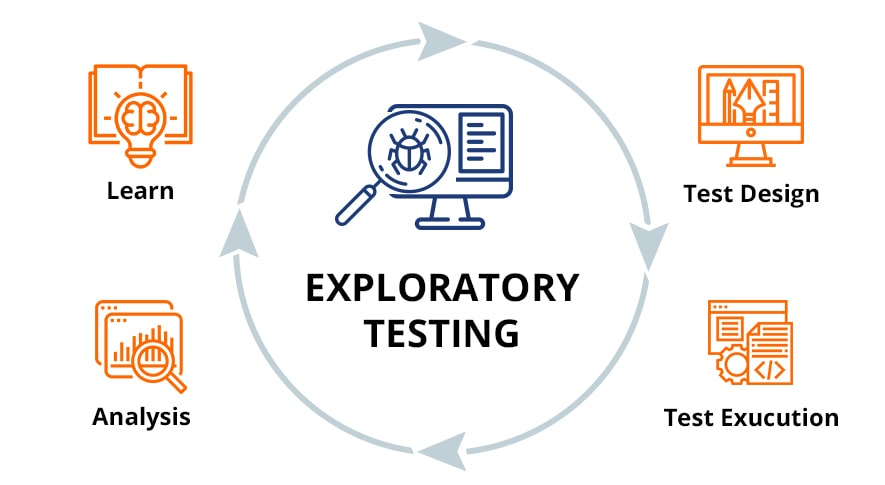Exploratory Testing Unveiled Through Real-Life Scenarios and Insights
- Yogesh Sharma
- May 21
- 3 min read
Exploratory testing is not just a technique; it is a mindset. It allows testers to discover defects in a more intuitive and personalized way compared to the rigid adherence to scripted test cases. This blog post will highlight real-life scenarios and insights that emphasize the importance and effectiveness of exploratory testing in delivering high-quality software.

What is Exploratory Testing?
Exploratory testing can be described as a method where learning, designing tests, and executing tests happen simultaneously. Testers adjust their focus based on real-time findings, making it effective in environments where software requirements evolve rapidly. In fact, studies have shown that exploratory testing can uncover up to 30% more defects than traditional testing methods.
This approach encourages an inquisitive mindset. Testers leverage their domain knowledge and prior experiences to investigate the software’s functionality, leading to the discovery of hidden defects that scripted methods might miss.
Real-Life Example 1: The E-Commerce Platform
Picture an e-commerce platform launching a new feature: a personalized product recommendation system. A tester embarks on exploratory testing without following a strict test plan.
As the tester signs up and browses products, they observe that recommendations depend on past purchases. Intrigued, they explore edge cases. For example, what happens if a user has never bought anything?
Upon adding items to the cart and trying to check out with incorrect payment details, the tester finds that the system provides vague error messages. They also notice that the recommendations do not change even after clearing the cart.
Through these insights, the tester helps developers refine the recommendation logic and improve error messaging. This exploratory session opened the door to issues that might have otherwise gone unnoticed, showcasing its critical value in the development process.
Real-Life Example 2: Mobile App Updates
Consider a company preparing to launch a major update to its mobile application. During quality assurance, exploratory testing is employed to evaluate new features and the app’s overall performance.
A tester updates the app on their device and explores new features such as user profile customization and social sharing. During this process, they spot a crucial bug: the new user interface does not display correctly on various screen sizes.
To dig deeper, the tester uses different device emulators. They discover that while the app operates smoothly on newer devices, older models like the iPhone 6 experience up to 40% slower performance. This finding highlights how exploratory testing empowers testers to investigate beyond scripted guidelines, ensuring users enjoy a seamless experience after the update.
Benefits of Exploratory Testing
Exploratory testing delivers several key benefits that enhance the software testing process:
Flexibility and Adaptability
Testers can change their strategies based on real-time observations. This flexibility enables them to focus on high-risk areas, which is crucial for applications with rapidly changing requirements.
Enhanced Defect Discovery
By encouraging testers to follow their instincts, exploratory testing significantly increases the chances of uncovering edge cases and defects. Research shows that exploratory testing can lead to 50% more discovered defects compared to scripted testing.
Encouraging Creativity and Innovation
When testers engage in exploratory testing, it sparks creativity, allowing them to approach problems with fresh perspectives. This can lead to innovative solutions and more effective testing approaches.
Insights into User Experience
Exploratory testing provides rich insights into how end-users navigate the software. By seeing the application from a user's perspective, testers can identify potential obstacles and enhance usability before deployment.
Tips for Effective Exploratory Testing
To optimize exploratory testing sessions, keep these strategies in mind:
Define a Testing Charter
Create a clear mission or objective for each exploratory session. This charter should outline specific areas to focus on, test goals, and any tools or resources to utilize.
Time Box Your Sessions
Set a specific time limit for exploratory testing. This encourages testers to concentrate on their findings and ensures that each session remains productive.
Keep Detailed Notes
Encourage testers to document their discoveries, observations, and any identified bugs. Good communication is vital for collaborating with developers and ensuring important issues are addressed.
Embrace Collaboration
Collaborating with team members can enhance exploratory testing. Pairing testers or involving developers can lead to diverse insights and a more robust understanding of the software.
Final Thoughts on Exploratory Testing
In summary, exploratory testing is a dynamic approach that significantly improves software quality. By allowing testers to use their creativity and insight, it reveals issues often overlooked by scripted testing. The real-life examples shared in this post underscore the practical benefits of exploratory testing.
As software development evolves, the role of exploratory testing becomes even more crucial in delivering reliable and user-friendly applications. By adopting this approach, teams can cultivate a culture of quality that enhances the user experience, paving the way for successful software products.
Exploratory testing is indeed a journey of discovery in the realm of software quality. The exploration to find excellence starts now!







Comments